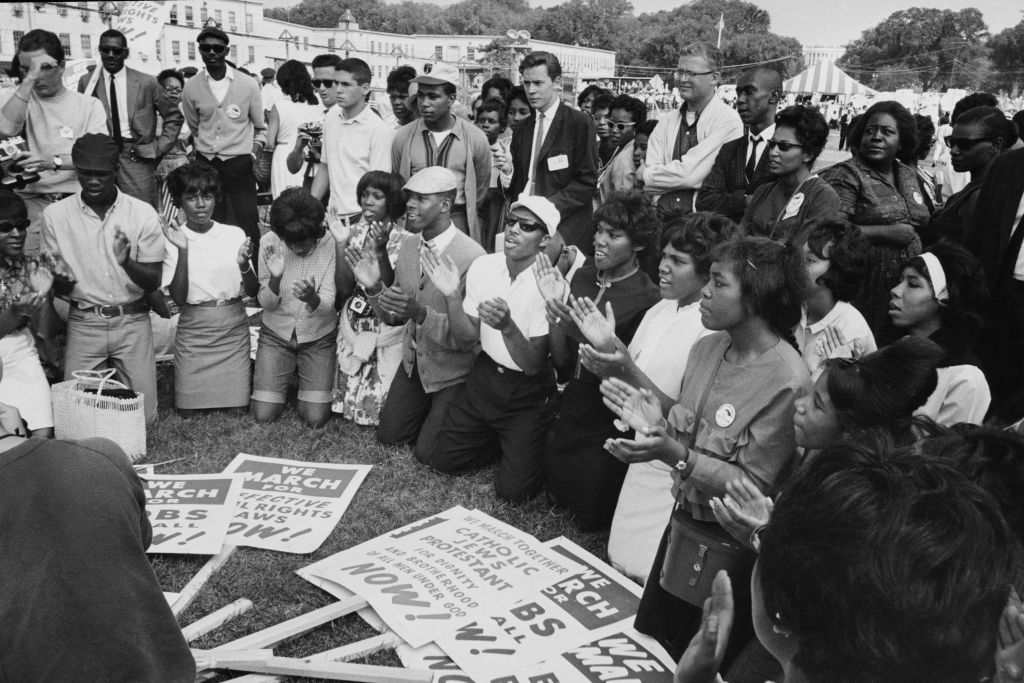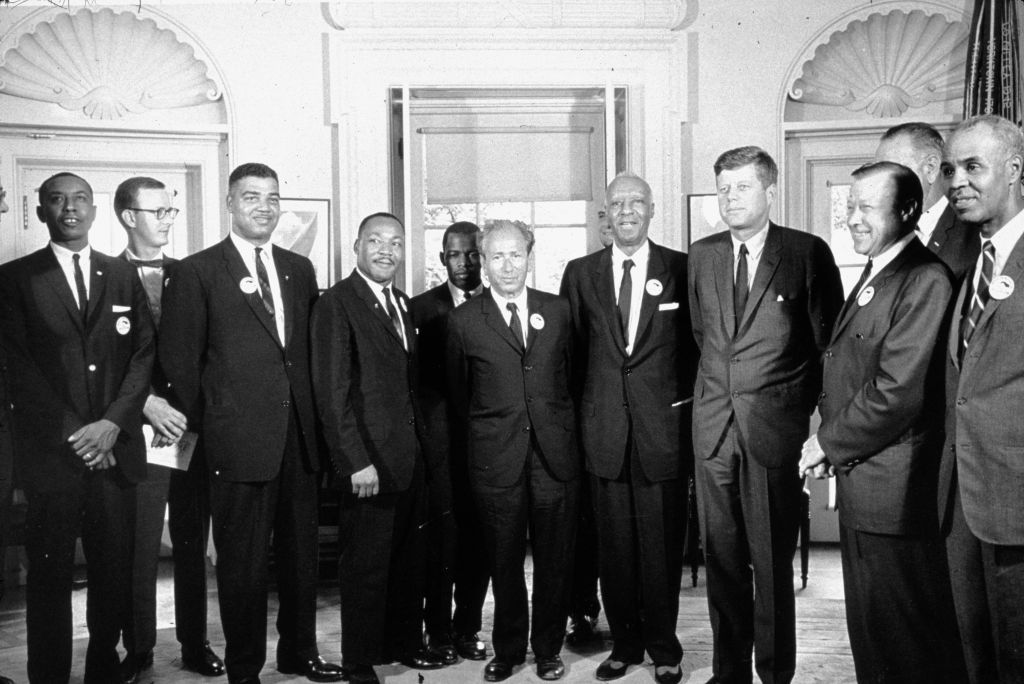Op-Ed: Why The March On Washington Still Matters
Op-Ed: More Than 60 Years After The March On Washington, We’re Still Fighting For Jobs And Freedom

When most people think about the 1963 March on Washington, they think of Rev. Dr. Martin Luther King, Jr. standing on the steps of the Lincoln Memorial delivering his iconic “I Have A Dream” speech to a crowd of more than a quarter million people from across the nation, filling that hot August day with hope and applause.
However, most of us don’t know that the March on Washington was really the March on Washington for Jobs and Freedom and it was about a whole lot more than segregated lunch counters and drinking fountains.
In fact, the work that led to Dr. King’s most iconic moment actually began when he was only 12 years old with one of the nation’s leading labor organizers.
A. Philip Randolph first proposed a “march for jobs” in protest of the racial discrimination that denied Black workers the new jobs created by WWII and the New Deal, along with the brighter future they promised.
The idea lost steam when Randolph and President Franklin D. Roosevelt worked together to create the Fair Employment Practice Committee (FEPC) and an executive order banning discrimination in defense industries. But it was revived five years later when the FEPC was dissolved following Roosevelt’s death.
A decade later, Randolph, Dr. King and Bayard Rustin fully revived the march, combining the ideas of national march for jobs with a national march for freedom aimed at the stalled Civil Rights Act and the March on Washington for Jobs and Freedom was born.
NAACP Executive Secretary Roy Wilkins was tapped to lead the effort with Randolph and they brought in the rest of the Big Six —James Farmer, founder of the Congress of Racial Equality (CORE); John Lewis, President of the Student Nonviolent Coordinating Committee (SNCC); and Whitney Young, Executive Director of the National Urban League. While the march’s stated goals included calling for an end to segregation, protection of voting rights and a real mechanism for Black folks to seek redress for the violations of their constitutional rights, it also called for a massive federal works program to train and place unemployed workers and a Federal Fair Employment Practices Act to end employment discrimination.

Now, I mention all this not just because Aug. 28 is the anniversary of the March on Washington, but because 62 years later, we seem to be having the same conversation.
I say it because all those old battles are new again, with fairness and affordability being our chief battleground.
Need proof? What about the fact that 50 years ago, President Lyndon Johnson signed an executive order that banned segregation in federal contracts? Just a few months ago, President Trump repealed it.
In 1964, Congress passed the Civil Rights Act of 1964, empowering federal law enforcement to investigate and prosecute civil rights violations. Earlier this year, Trump ordered the Department of Justice to stop those investigations and prosecutions.
From housing to healthcare, the average American is paying a whole lot more for everything; and while wages have increased since 1963, they haven’t kept pace with inflation—and it’s just getting worse.

In fact, over the past 60 years, there’s been a massive transfer of wealth from the middle class to the wealthiest families. So much so that by 2022, the wealthiest families in America had 71 times more than the middle class.
Affordability was such an issue back in 1963 that President Johnson launched the War on Poverty in 1964, establishing Social Security, creating the Job Corps and passing the Food Stamp Act to keep hard-working Americans from starving. Now, President Trump is dismantling that infrastructure brick by brick to give big tax breaks to billionaires.
Meanwhile, Trump’s trade war and public policies are making everything more expensive. Just check your own grocery bill. The cost for coffee is up nearly 15%, ground beef is 11% more expensive and egg prices are up by 16%. The most recent reports show that vegetable costs are up a staggering 38% and that’s wholesale!
Right now, Americans making six-figure salaries are having to take out loans to buy groceries. That’s not leftover from the last administration. That’s right now and MAGA leaders are trying to convince us that it’s a good thing.
So, just like in 1963, we’re all under attack as minorities and the middle-class both still find themselves in the firing line.
It turns out that not all progress is permanent and it affects all of us. So, it’s up to all of us to do something about it.
Antjuan Seawright is a Democratic political strategist, founder and CEO of Blueprint Strategy LLC and a senior visiting fellow at Third Way. Follow him on X, formerly known as Twitter, @antjuansea.
SEE ALSO:
Op-Ed: 2 Photos, 1 Promise—60 Years After The Voting Rights Act
Op-Ed: It’s Time We Give ‘Scrappy Joe From Scranton’ His Flowers




